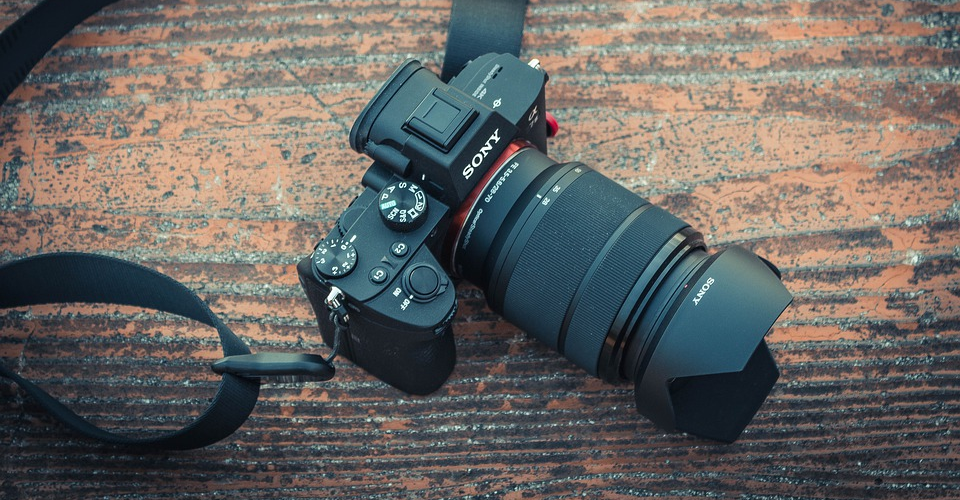6 Best Lenses for Sony a7III in 2020
The a7III is one of Sony’s most critically acclaimed mirrorless cameras of all time. It’s a stellar choice for photographers and filmmakers alike thanks to its full-frame sensor, cutting-edge processor, and commendable low-light performance. Such an accomplished camera deserves to be paired with only the finest lenses, wouldn’t you agree?
We sure think so, which is why we’ve made a guide on the best lenses for Sony a7III you can get. There’s a model for each occasion, whether you’re interested in wide angle lenses for your travel vlog, or need a macro lens for professional-grade insect close-ups. Explore each of our choices and get even more awe-inspiring results from your camera.
| Budget |
|---|
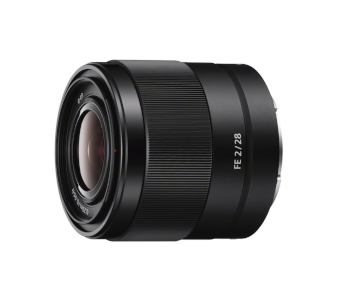 |
| Sony SEL28F20 FE 28mm f/2-22 |
| 4.4/5.0 |
| Type: Standard prime |
| Image stabilization: No |
| Excellent sunstars and flaring resistance. |
| Check Amazon |
| Best Value |
|---|
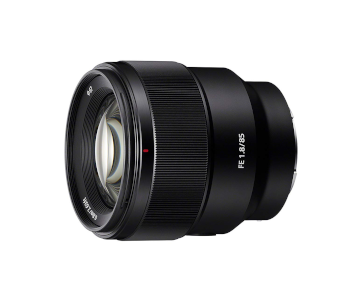 |
| Sony SEL85F18 85mm F/1.8-22 |
| 4.5/5.0 |
| Type: Fixed telephoto |
| Image stabilization: No |
| Has a quiet and responsive autofocus. |
| Check Amazon |
| Top Pick |
|---|
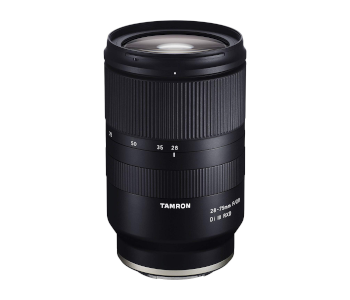 |
| Tamron 28-75mm F/2.8 Di III RXD |
| 4.7/5.0 |
| Type: Standard zoom |
| Image stabilization: No |
| Innovative focus ring and quiet autofocus. |
| Check Amazon |
Lenses for Sony a7III Comparison Table
| Image | Product | Overall Rating | Image quality | Build Quality | Features | Price |
|---|---|---|---|---|---|---|
 | Tamron 28-75mm F/2.8 Di III RXD | 4.7 | 4.8 | 4.7 | 4.7 | Check Price |
 | Sony SEL85F18 85mm F/1.8-22 | 4.5 | 4.5 | 4.6 | 4.4 | Check Price |
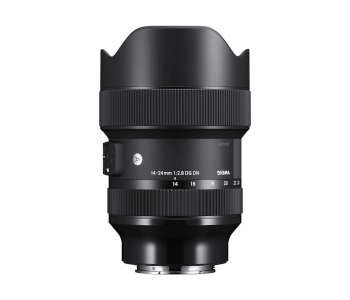 | Sigma 14-24mm f/2.8 DG DN Art | 4.7 | 4.7 | 4.6 | 4.7 | Check Price |
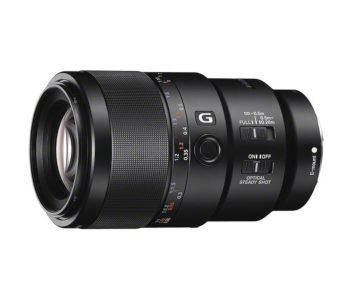 | Sony FE 90mm f/2.8 Macro G OSS | 4.5 | 4.4 | 4.5 | 4.5 | Check Price |
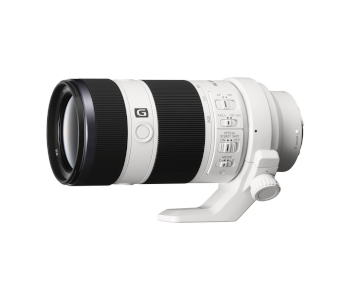 | Sony FE 70-200mm f/4 G OSS | 4.4 | 4.6 | 4.0 | 4.7 | Check Price |
 | Sony SEL28F20 FE 28mm f/2-22 | 4.4 | 4.3 | 4.3 | 4.6 | Check Price |
1. Best Overall – Tamron 28-75mm F/2.8 Di III RXD
Editor’s Rating: 4.7/5
If you’ve got room in your budget for a single lens after purchasing the A7III, Tamron’s 28-75mm F/2.8 Di III RXD is the one to get. It’s the most responsive and versatile lens on review, and its price is reasonable to boot. The wide focal length covers everything from landscapes through portraits to night sky photography, while its consistent maximum aperture of f/2.8 ensures you always have ample light.
Overview of Features
You might think that Tamron’s lens is flimsy at first because of its light weight. No need to worry since its casing is made from polycarbonate that’s both lightweight and durable. The focusing and zoom rings are reversed, which might take some adjusting. However, you’re getting nuanced focusing capabilities in return. It takes the ring anywhere from four turns to three-quarters of a turn to go from its minimum focusing distance to infinity based on the speed of rotation.
A rapid extra stepping drive powers the lens. It is silent and responsive, so you can shoot videos and not worry about autofocus sounds ruining your scene. The lens has a dedicated AT tracking chip that keeps it glued to moving subjects for photos and videos alike. It acquires targets fast, but you should use the a7III’s continuous focus mode for optimum results.
The best thing about the Tamron 28-75mm F/2.8 Di III RXD is its sharpness. Images are crystal-clear across all focal lengths and retain impressive edge sharpness as well. It falls off somewhat when using f/2.8, but is still noticeably better than most comparable lenses out there. Switching to f/5.6 produces the sharpest edges and eliminates chromatic aberration, which isn’t pronounced in the first place.
The wide focal range makes Tamron’s lens a versatile performer. 28mm is still wide enough for group portraits, landscapes, or meals. On the opposite end, 75mm is ideal for portraits and astronomy photos. There’s only a hint of vignetting at the widest focal length while bokeh is tasteful whichever zoom level you use.
What We Didn’t Like
The Tamron 28-75mm F/2.8 Di III RXD doesn’t have an AF/MF switch. This improves its build quality as there are fewer moving parts. It also means you have to fiddle with the a7III’s menus instead of simply flipping a switch when changing focus modes. You might want to look for another lens if you’re an action-oriented filmmaker since it takes long to focus on subjects in low light when in video mode.
| Tech Specs |
|---|
| Dimensions: 2.9 x 2.9 x 4.6 in. |
| Weight: 1.2 lbs. |
| Type: Standard zoom |
| Minimum focal length: 28mm |
| Maximum focal length: 75mm |
| Maximum aperture: f/2.8 |
| Minimum focus distance: 7.5 in. |
| Viewing angles: 75° 23′ to 32° 11′ |
| Image stabilization: No |
| The Pros |
|---|
| Lightweight yet durable |
| Outstanding sharpness |
| Innovative focus ring |
| Quiet autofocus |
| The Cons |
|---|
| No AF/MF switch |
| AF is slow for videos in low light |
2. Best Value – Sony SEL85F18 85mm F/1.8-22
Editor’s Rating: 4.5/5
There are lots of fixed telephotos to choose from for the a7III, but none of them can match the price-to-performance ratio of the SEL85F18 85mm F/1.8-22. This affordable lens lets in a lot of light, produces beautiful bokeh, and doesn’t have a hint of distortion. It’s as sharp as much more expensive alternatives and even has fast autofocus to round out the user experience. This is the lens to get if you’re a portrait or architectural photographer.
Overview of Features
The SEL85F18 85mm F/1.8-22 is another lightweight lens. Its fixed focal length of 85mm allows it to be squat and have fewer moving elements than zoom lenses. The body is made from aluminum and has a nicely knurled focus ring. Sony uses focus-by-wire, so turning the ring will engage a silent motor to adjust the focus rather than mechanically rotate internal parts. Physical controls include the AF/MF switch and a hold focus button useful for shot reposition.
The fixed focal length allows for a high aperture of f/1.8, letting you capture scenes with a pronounced depth of field and use the a7III for low-light photography. Sharpness at this aperture is understandably not the best. Still, images retain a respectable resolution that only gets better as the aperture decreases, reaching a sweet spot at f/8.
Chromatic aberration is controlled well across aperture sizes, reaching a tolerable two pixels at f/22. A drive motor handles the autofocus speedily and accurately, so don’t expect the customary sluggishness you’d see from other low-cost Sony lenses. Finally, the SEL85F18 85mm F/1.8-22 can create a wonderfully shallow depth of field with creamy bokeh that puts subjects first while rendering the background free from distractions.
What’s Bad About It?
The SEL85F18 85mm F/1.8-22 doesn’t handle direct exposure to sunlight well. There are no lens flares, but it experiences a drop-off in sharpness and considerable hazing. Vignetting is also a problem at high f numbers. You can get rid of most lighting discrepancies when editing, but the effect will still be noticeable.
| Tech Specs |
|---|
| Dimensions: 3.1 x 3.1 x 3.2 in. |
| Weight: 13.1 oz. |
| Type: Fixed telephoto |
| Focal length: 85mm |
| Maximum aperture: f/1.8 |
| Minimum focus distance: 2.6 in. |
| Viewing angle: 29° |
| Image stabilization: No |
| The Pros |
|---|
| Excellent value for the money |
| Quiet and responsive autofocus |
| High maximum aperture that produces beautiful bokeh |
| Sharp and free from distortion |
| The Cons |
|---|
| Prone to hazing when shooting in direct light |
| Pronounced vignetting at large aperture sizes |
3. Sigma 14-24mm f/2.8 DG DN Art
Editor’s Rating: 4.7/5
Sigma’s award-winning Art line carries the best ultra-wide zoom lens for Sony’s excellent full-frame camera. The 14-24mm f/2.8 DG DN Art is built to last and has no trouble keeping up with the a7III’s sensor. It’s also among the brightest wide-angle lenses with an aperture of f/2.8 regardless of focal length.
Overview of Features
You’d expect a wide angle lens to be bulky and make your camera front-heavy, but the 14-24mm f/2.8 DG DN Art is slim and unobtrusive for its category. Its body is made from a mix of polycarbonate and metal. The weather sealing is superb as the lens is resistant to water and dust. It’s also coated with fluorine, which helps with maintenance since this prevents smudging and causes water to slide off.
The lens has responsive zoom and focus rings with rubberized knurling for better grip. There’s a switch to toggle between focusing modes and a focus lock button. You can remap the button’s function to something like turning Eye AF or other frequently-used settings on instead. Getting a subject into focus is swift and noiseless, with minimal hunting even in low light.
This lens excels at landscape and city photography but can hold its own for portraits and quasi-macro shots too. The latter two offer a refreshing take as the subject is framed surrounded by much background. Wide angle lenses aren’t renowned for their bokeh. Even so, the 14-24mm f/2.8 DG DN Art produces unusually smooth blurring at higher apertures, letting you create artistic pieces with ease.
The lens handles chromatic aberration well. It’s non-existent at most f numbers and consistent throughout the focal range. Sharpness is excellent as well and best between f/5.6 and f/11. You’ll want to avoid compositions that include the sun because of lens flares, but cranking the aperture down to f/22 does produce eye-catching sunstars.
Are There Drawbacks?
The 14-24mm f/2.8 DG DN Art suffers from pronounced distortion, as do all wide angle lenses. This is manifested as barrel distortion at 14mm and a slight pincushion effect at 24mm. There’s no image stabilization. This is a moot point if you’re snapping landscapes on a tripod, but the a7III’s IBIS might not be enough for run and gun shooting.
| Tech Specs |
|---|
| Dimensions: 3.4 x 3.4 x 5.2 in. |
| Weight: 28 oz. |
| Type: Wide angle zoom |
| Minimum focal length: 14mm |
| Maximum focal length: 24mm |
| Maximum aperture: f/2.8 |
| Minimum focus distance: 11 in. |
| Viewing angles: 114.2° to 84.1° |
| Image stabilization: No |
| The Pros |
|---|
| Versatile in spite of being a wide angle lens |
| Excellent build quality and weather sealing |
| Quick AF response time regardless of light |
| Minimal chromatic aberration and vignetting |
| The Cons |
|---|
| No image stabilization |
| Pronounced distortion |
4. Sony FE 90mm f/2.8 Macro G OSS
Editor’s Rating: 4.5/5
Macro is the way to go when you’re into close-up photography, but the Sony FE 90mm f/2.8 Macro G OSS demonstrates that this is not the only thing it can do. The lens has a focal length that accommodates portraiture under the right circumstances. Its 1.0x zoom factor and reasonable minimum focus distance ensure bugs or small animals won’t be frightened before you take their picture.
Overview of Features
The Sony FE 90mm f/2.8 Macro G OSS is another large and heavy lens. It doesn’t look as comical attached to the a7 III as Sony’s telephoto lens, and its build quality is improved thanks to an aluminum body. The lens is resistant to dust and moisture and has a fixed length. It doesn’t move when focusing, so you can attach and use polarizing filters. There are physical controls for image stabilization and three levels of focus limiting.
This is one of the leading E mount lenses in any category when it comes to sharpness. Subjects are tack sharp no matter the focusing distance, and the resolution decrease towards the edges is tolerable. The Sony FE 90mm f/2.8 Macro G OSS is another lens that handles color fringing exceptionally well. Discoloration is visible only in cases with pronounced contrasts between light and dark.
Bokeh quality is one of a macro lens’ defining features, and it’s right on the money. You’ll notice the cat’s eye effect when using f/2.8. Everything smaller than that leads to smooth concentric circles and pleasingly blurry backgrounds. You can even snap subjects from a distance with a blurred landscape serving as the backdrop to get unusual yet welcome results.
What’s Bad About It?
The Sony FE 90mm f/2.8 Macro G OSS’s autofocus is slow even under optimum conditions. The a7III isn’t known for blazing autofocus speeds either, so combining the two isn’t suitable for dynamic or sports photography. The focus ring doesn’t have fixed end stops. That makes it harder to figure out when you’ve reached infinity.
| Tech Specs |
|---|
| Dimensions: 3.1 x 3.1 x 5.1 in. |
| Weight: 1.3 lbs. |
| Type: Macro |
| Focal length: 90mm |
| Maximum aperture: f/2.8 |
| Minimum focus distance: 11 in. |
| Viewing angle: 27° |
| Image stabilization: Yes |
| The Pros |
|---|
| Great for both macro and portrait photography |
| Solid build quality |
| Has image stabilization |
| Produces tasteful blur |
| The Cons |
|---|
| Slow autofocus |
| Focus ring doesn’t have end stops |
5. Sony FE 70-200mm F4 G OSS
Editor’s Rating: 4.4/5
Telephoto zoom lenses are another versatile bunch as they’re great for everything from flattering wedding photography to stunning wildlife shots. The Sony FE 70-200mm F4 G OSS distinguishes itself with a wide focal range, nuanced physical controls, and a slew of helpful accessories. It might dwarf your a7III, but looking funny is a small price to pay for the stunning photos you can get with this lens.
Overview of Features
The Sony FE 70-200mm F4 G OSS is massive, as befits a telephoto zoom lens. Surprisingly, it weighs just 1.9 pounds thanks to its polycarbonate body. The lens is weather-sealed and has a thread for polarization filters. It comes with a carrying case, a ring you can use to attach it to a tripod, and a metal hood useful for minimizing glare.
You can control the Sony FE 70-200mm F4 G OSS minutely thanks to several physical switches and buttons. Apart from focus mode switching and locking, you also get a focus limiter that prevents the lens from cycling through its entire range. Built-in image stabilization has its own switch, as does mode selection you should switch from Normal to Pan when panning the camera.
The lens employs dual motors to keep autofocus quiet and on point. Coupled with image stabilization from it and the camera, this produces smooth results and rapid target acquisition. You can use the Sony FE 70-200mm F4 G OSS during the golden hour or in large interiors without the fear of excessive hunting.
We love how balanced the lens is. There’s noticeable light fall-off only at f/4 when shooting in RAW. Your a7III will take care of inconsistencies in-camera for JPEGs, while excellent RAW quality can be attained with editing software. There’s slight barrel distortion at 70mm no one will notice if you increase the aperture size. Speaking of which, the lens creates creamy bokeh at any zoom level. Lastly, chromatic aberration is present in high-contrast situations but not pronounced enough to matter.
What We Didn’t Like
Sony could have invested more in the FE 70-200mm F4 G OSS’s build quality, especially given its four-digit asking price. The plastic body scratches easily and may even break in half if stressed in the middle, so take care of it like you would of a newborn.
| Tech Specs |
|---|
| Dimensions: 3.2 x 3.2 x 6.9 in. |
| Weight: 1.9 lbs. |
| Type: Telephoto zoom |
| Minimum focal length: 70mm |
| Maximum focal length: 200mm |
| Maximum aperture: f/4 |
| Minimum focus distance: 39.4 in. |
| Viewing angles: 34° to 12° |
| Image stabilization: Yes |
| The Pros |
|---|
| Excellent for portrait and wildlife photography |
| Customizable control set |
| Outstanding picture quality |
| Good low-light performance given its max aperture |
| The Cons |
|---|
| Poor build quality |
6. Best Budget Option – Sony SEL28F20 FE 28mm f/2-22
Editor’s Rating: 4.4/5
Our budget pick is a prime lens with a fixed focal length of 28mm. It’s wide enough to capture a city’s towering architecture or the outdoors, but doesn’t fall short when you’re taking portraits with an emphasis on the subject’s surroundings either. The Sony SEL28F20 FE 28mm f/2-22 is small, light, and well-made, yet it costs less than $500 and will be a welcome addition to any enthusiast or pro user’s arsenal.
Overview of Features
The Sony SEL28F20 FE 28mm f/2-22 is the lightest and most compact lens on review, inviting you to take it along even if you weren’t planning on using it. Considering its price, the build quality is above average and features a light aluminum build along with proofing against the elements. There are no buttons or switches, and the focus ring is a pleasure to use. It’s got the same proportional focusing mechanism as our overall winner, making fine adjustments possible.
While it isn’t a bad performer in low light, the Sony SEL28F20 FE 28mm f/2-22 is at its best when shooting outdoors. No other lens in the guide comes close to the way it handles direct sunlight. There are no flares, and incorporating the sun into your composition doesn’t impact image quality. The aperture is made up of nine blades that produce satisfying sunstars at low f numbers. The Sony SEL28F20 FE 28mm f/2-22 is an excellent choice for astronomical photography as well since it has above-average coma correction, meaning that stars and planets aren’t distorted.
Are There Drawbacks?
The Sony SEL28F20 FE 28mm f/2-22 shows strong vignetting and barrel distortion. Luckily, the a7III can get rid of the distortion entirely and minimize the light fall-off. Still, keep in mind that RAW photos will retain a hint of edge darkening after correction. The lens can create smooth bokeh at short and medium distances. Going for bokeh at f/2 isn’t a good idea, however, since its edges suffer from color fringing.
| Tech Specs |
|---|
| Dimensions: 3.1 x 3.1 x 5.1 in. |
| Weight: 7 oz. |
| Type: Standard prime |
| Focal length: 28mm |
| Maximum aperture: f/2 |
| Minimum focus distance: 11.4 in. |
| Viewing angle: 75° |
| Image stabilization: No |
| The Pros |
|---|
| Lightweight and portable |
| Usable for a wide array of photography types |
| Excellent sunstars and flaring resistance |
| Good choice for entry-level astronomical photographers |
| The Cons |
|---|
| Pronounced vignetting and barrel distortion largely correctable in-camera |
| Strong chromatic aberration on bokeh at f/2 |
Contents
- Lenses for Sony a7III Comparison Table
- 1. Best Overall – Tamron 28-75mm F/2.8 Di III RXD
- Overview of Features
- What We Didn’t Like
- 2. Best Value – Sony SEL85F18 85mm F/1.8-22
- Overview of Features
- What’s Bad About It?
- 3. Sigma 14-24mm f/2.8 DG DN Art
- Overview of Features
- Are There Drawbacks?
- 4. Sony FE 90mm f/2.8 Macro G OSS
- Overview of Features
- What’s Bad About It?
- 5. Sony FE 70-200mm F4 G OSS
- Overview of Features
- What We Didn’t Like
- 6. Best Budget Option – Sony SEL28F20 FE 28mm f/2-22
- Overview of Features
- Are There Drawbacks?

